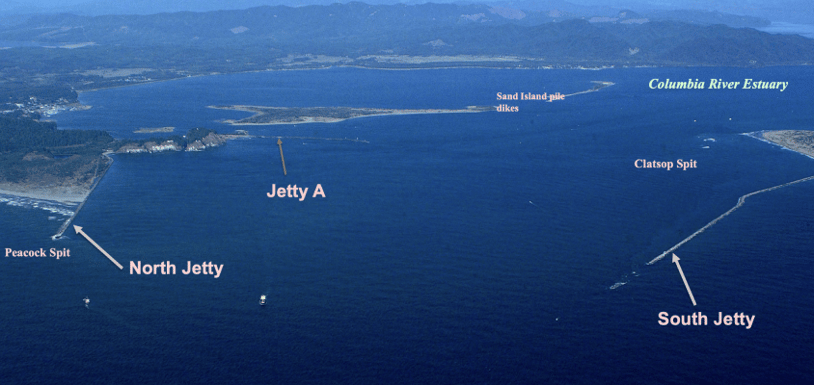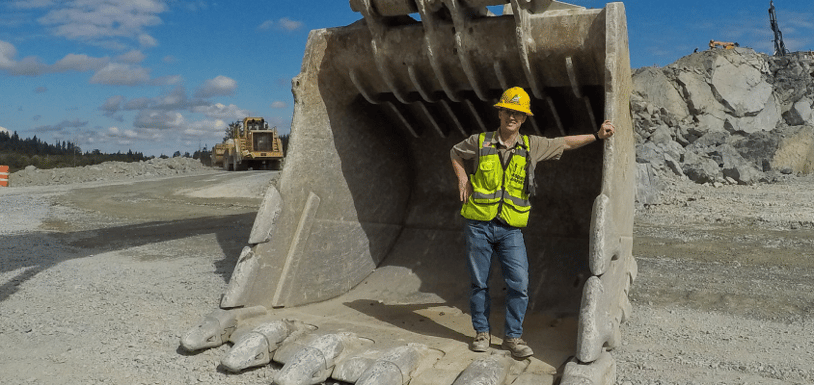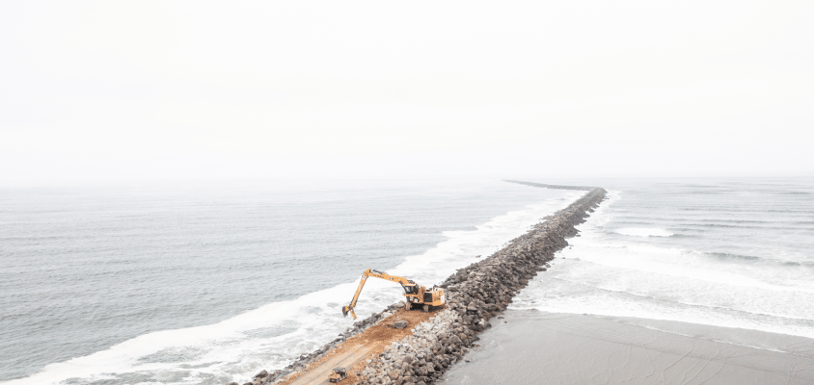
Day 15 — The Jetty
Growing up an Arizona kid, I never knew marine construction existed until I signed up for the ASC Reno Competition's marine construction problem in college. I got my ass kicked. But that's a story for another day...
Today, I'm writing about the Columbia River Jetty System, also known as the MCR.
Between 1885 and 1917, the US government built three enormous stone walls, called jetties, where the Columbia River meets the Pacific.

The purpose of the structures is twofold: to naturally dredge the channel, keeping it open to shipping traffic, and to prevent large storm surges from advancing upriver.
But man is no match for Mother Nature. Despite the success of the MCR jetty system, over a century of constant battering from swells, sometimes 30' high, took its toll. All three jetties needed a facelift.
Starting with Jetty A in 2016, the Army Corps began awarding contracts. I coincidentally helped quarry the rock for this project while working for Kiewit. That said, I never saw the jetty—I was hundreds of miles away.

The most recent project, the South Jetty, is by far the biggest. With approximately 425,000 tons of stone to quarry and place, JE McAmis is in their fourth season of the $141MM project.
Using a custom-built Cat 6020B with nearly 100' of reach, team JE McAmis is rehabilitating the jetty with armor stones ranging from 10-40 tons each.
After spending the night at the Astoria KOA (a new life experience for me), we followed Jetty Road to its end, where CONSTRUCTION signs greeted us. The morning was cold and wet—starkly contrasting the 115-degree weather in Vegas less than a week prior.
We met our guides with JE McAmis, discussed their progress on the project since my last visit in 2021, and exchanged our hard hats and vests for climbing helmets and life jackets.
We mounted a side-by-side and then drove through the rain toward the jetty. First, we passed the staging yard, where multiple large loaders ferried and organized rocks. They loaded one or two rocks into 773 haul trucks, which crossed certified scales before heading to placement.
The project's rock comes from quarries in California, Oregon, and Washington. First traveling by low bed, the stones make their way onto a barge, which lands a few miles upriver from the jetty.
Driving over one mile out on the jetty was a fantastic experience. The waves of the Pacific Ocean crashed to our left, while the calm waters of the Columbia seemed to reach forever on our right. Birds dove into the waters for their breakfast, and the Washington mountains began to reveal themselves through the morning fog.
Moments like these make me feel so damn grateful for my job…

We stopped outside of the working radius of the Cat 6020B long reach. One at a time, the 773 trucks backed down the jetty for hundreds of yards, dropped their rock or two, and took off for another. The operator of the 6020 grabbed each rock and rolled them over to reveal the unique number and weight painted onto each.
Now for placement! Relying on the machine's custom-fabricated Esco bucket and thumb, the operator examined every rock to understand its angles, like a jeweler examining a raw diamond before cutting.

Once he grasped the stone, he began finding a place for it. Via radio, the operator constantly talked to a spotter on the ground, who relayed instructions thanks to his unique viewpoint.
Between the two jetty stone placement specialists and the Trimble 3D GPS, they placed every rock to exact Army Corps specifications. It's a tedious process. Watching the work was similar to watching an experienced chef work. Only instead of onions, its rocks the size of minivans.
Thanks to the work of JE McAmis and the Army Corps, the people upriver will remain safe in the harshest of storms, and hundreds of thousands of people will benefit from the economic activity generated by the river.















